News
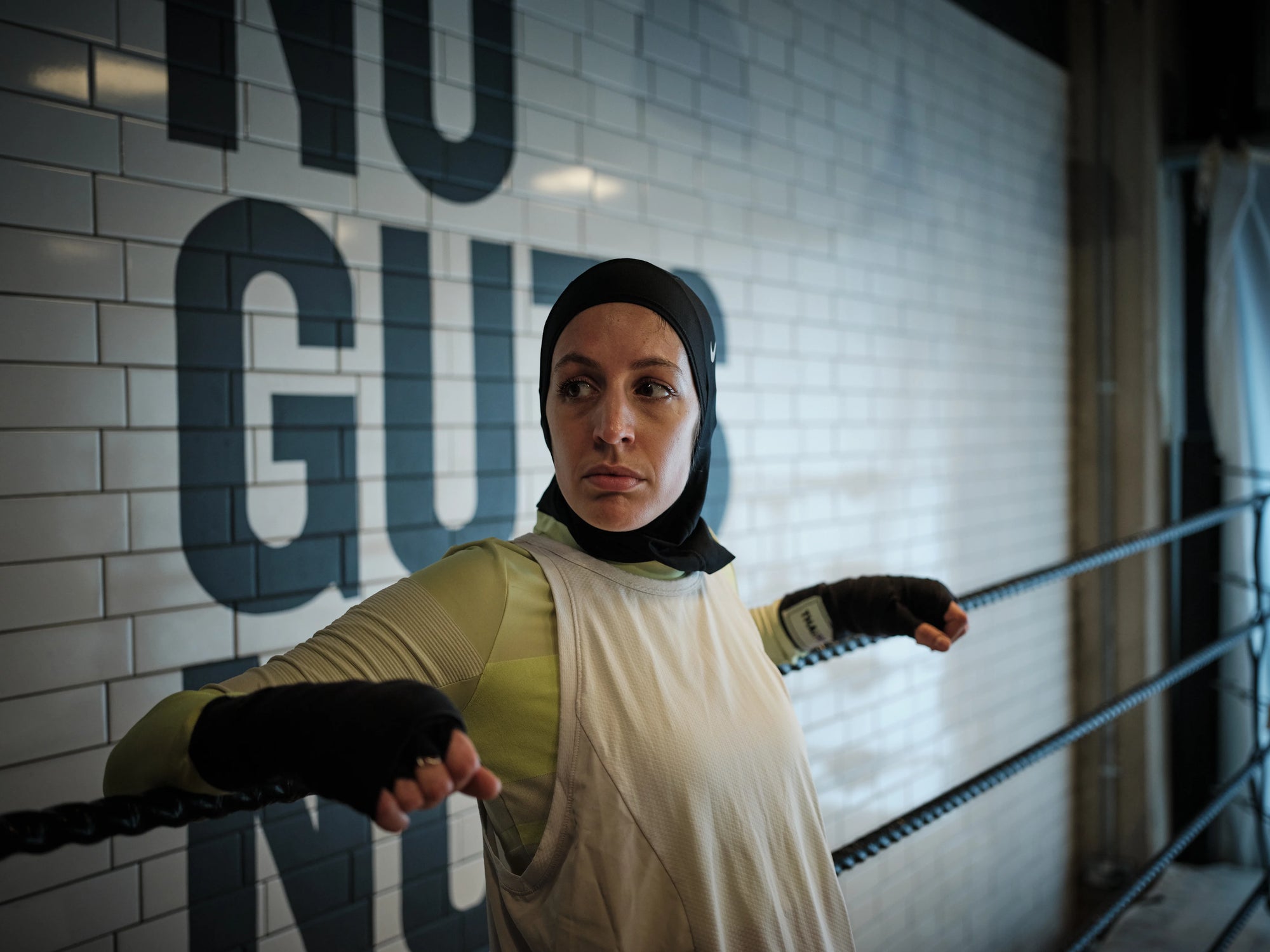
Nesrine Dally: Movement creates positive change
Have you ever considered what it takes to be a trailblazer? To be the first person to do… Well, anything? Muay Thai boxer and London-based trainer Nesrine Dally knows all too well the obstacles that come with being first: she was the first hijab-wearing athlete to compete in a Muay Thai stadium in Thailand. But her story is more than one of wake up, put on a hijab, kick butt. As a Muslim woman who covers, there were multiple points along the way when Nesrine had to decide how keep moving in her sport.
Nesrine discovered Muay Thai while studying sports science at university. “It's not compulsory, but if you're doing a sport science degree, you tend to pick a sport,” she said. She tried out for a few different teams—like netball and basketball—but nothing excited her.
Then she found combat sports. She stumbled across a Muay Thai gym in Northwest London—two hours away from her university by bus—and she was blown by her first session.
“I'd never seen anything like it before,” Nesrine said. “It was such a difficult workout. I think that captivated me because I'm from quite an athletic background; I've done and competed in a variety of sports, and this was super challenging. And I liked the fact that everyone around me looked just beautiful when they were practicing.”
Nesrine didn’t cover when she started Muay Thai, so transitioning to competing as a hijab-wearing athlete meant adaptation.
“There were a number of challenges,” she said. “I think some of them were the internal anxiety and nerves around how I would be perceived from other people. And there were some actual, technical issues. There weren't any sports hijabs around at the time or they were very limited; if they were making them, they weren't the best products because it was very new.”
Without readily-available hijabs in performance materials, Nesrine set about improvising with what she could find in stores to make her own.
Beyond the lack of proper gear, she didn’t have many role models to look up to. “I think the biggest thing really was that there was nobody in the UK doing Muay Thai that looked like me, or was practicing wearing a hijab. It felt like I was sticking out like a sore thumb, as you say, so that was quite difficult.”
There’s a thing that happens when someone forges a new path: it makes traveling down the same road easier for the next person. That’s what’s occurred in London after Nesrine blazed the trail as a hijab-wearing Muay Thai fighter. Other women could see themselves in her. They could imagine the possibilities.
Today, Nesrine runs her own health and fitness community space, Health Hub London. Though she’s had to get creative with virtual and outdoor training sessions throughout the pandemic, she says that she’s been able to make it work thanks to the versatility and portability of the TRX Suspension Trainer.
“During the pandemic, the TRX has saved my life as I've transitioned into training people outside,” she said. “Fourteen years in the industry— I never thought I'd be training people in a park, but that's where we are. It just meant I had a gym I could take around with me, and I didn't have to bring all the weights. My clients have loved actually doing TRX based sessions.”
In addition to running Health Hub London, Nesrine is Nike’s first hijab-wearing trainer. “Aligning with Nike and becoming a Nike trainer was a massive highlight in my career,” she said. “It allowed me to speak on a massive stage to a global audience… London is so diverse and I think it was so significant and poignant that they chose somebody like me to represent the fitness industry. Not everyone looks like the front of Women's Health—super skinny, white, blonde, female. The fitness industry is so vast and so diverse.”
That shift in the fitness industry mindset of what a trainer should look like is a subject close to Nesrine’s heart as she champions prioritising what strong feels like, over what strong looks like.
That’s a message that seems to be resonating with incoming clients at Health Hub. Nesrine said that the last five or six clients to join her training program have said their number one goal was to feel strong. “If I rewind five years ago, most people would have said to lose weight and tone up; which is fine if that’s what they want. Ultimately, there's been a shift in what people want. Now, people want to feel strong, they want to feel empowered. I think they understand that movement creates a feeling as well as the physical benefits of it.”
Over the last decade, there have been repeated cries that representation in media matters. Something as simple as showcasing a hijab-wearing athlete on social media demonstrates why. Scroll down Nesrine’s Instagram feed, and you’ll see her training other hijab-wearing women around London. Throughout Ramadan, Nesrine shares her tips for training and fasting during the month on social media. Her advice can resonate with Muslim and non-Muslim athletes alike, but she’s speaking to a segment of the population that rarely gets addressed; that rarely gets showcased in the fitness world.
As a hijab-wearing athlete in a combat sport, Nesrine hopes she can encourage the next generation of girls to take up martial arts and boxing, and smash the stigma that combat sports are for men.
Most of all, she wants people to understand the benefits of movement. “Movement creates positive change: physical change, mental change. It really allows you to explore your body's full potential and discover things that make you feel good... I want it to be accessible for women, especially Muslim women, especially young, Muslim girls who tend to drop out of sports at a young age because they don't see themselves represented in mainstream sports and the media. I hope to be almost a symbol of hope for the women that maybe once felt like there wasn't a space for them."
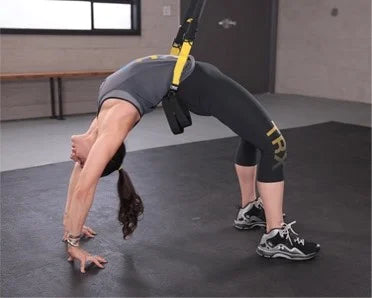
HOW TRX CAN LEVEL UP YOUR YOGA PRACTICE
When you’re a yoga newbie, finding your balance can be a struggle. As your class instructor gracefully transitions through swan-like movements standing on one foot, you might find yourself precariously wobbling like a newborn colt. When you fall, it can be tempting to give up, but the TRX Suspension Trainer can help you build better balance to improve your yoga routine.
The TRX Suspension Trainer is designed to be a tool that anybody can use, regardless of their level of strength. Many popular TRX Suspension Trainer exercises can be more accessible versions of advanced bodyweight exercises, for example, a TRX Chest Press can be a lighter-weight alternative to a pushup and a TRX Single Leg Squat can be the stepping stone to a bodyweight pistol squat. Similarly, the Suspension Trainer can help stabilise yoga poses while your body adjusts to learning a pose, kind of like training wheels for fitness.
If you're wondering how to translate yoga poses on a mat to TRX exercises on the straps, we have a team of yogis like Shauna Harrison and Krystal Say, who have developed yoga programming specifically for the TRX Suspension Trainer.
From backbends to crow pose, Warrior III to handstands, the TRX Suspension Trainer can offer extra support for flexibility to help you take your yoga to the next level when your body is ready. Think of the Suspension Trainer just like any other prop you might find in a yoga studio.
“I think the TRX is an amazing prop for yoga,” Harrison said. “Just like how the block, yoga straps, and hammocks (for aerial yoga) can also be used as props, the TRX Suspension Trainer is really another tool for us to use.”
Itching to master yoga balancing for yourself? Both Harrison and Say are serving up TRX for Yoga goodness on TRX Live, our free streaming classes—all you need is a TRX Suspension Trainer and an internet connection. Drop-in and flow...you’ll be glad you nama-stayed.
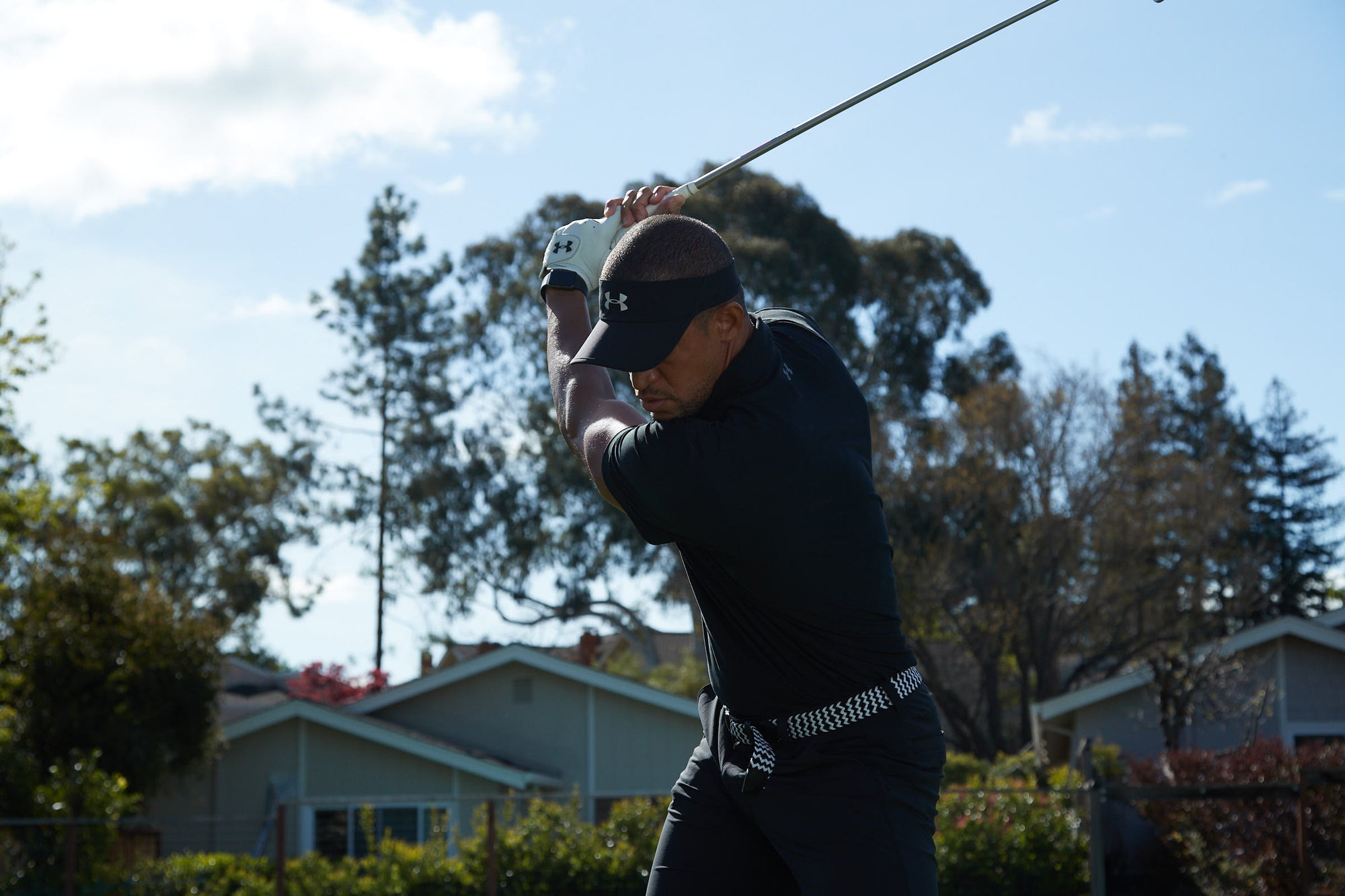
Ace Your Drive with These 4 TRX Movements
Whether you’re in it to win it, or you just enjoy having beers with friends on the green, your drive sets the tone for your golf game. Any expert can tell you that practice is the key to improving your drive, but golfers don’t improve through repetition alone: First, you need to develop the stability, mobility, and strength that enable you to hone your swing.
According to Trevor “TA” Anderson—TRX Master Trainer and Golf Performance Expert—the most important golf-related exercises are those that can help you create a better connection with the ground. “Stability is the most important aspect of all performance. If we can't connect [with the ground], we can't produce force,” Anderson said.
Which moves are best-suited for golfers with an eye towards a better score? These five Anderson-approved exercises—using the TRX Suspension Trainer and TRX Rip Trainer—will help you ace your drive.
TRX Suspension Trainer Picks
With the TRX Suspension Trainer, Anderson suggests focusing on exercises that engage the posterior chain. Start with a TRX Squat, firmly rooting your feet into the ground for each rep. If you want to build on that move, try upgrading to a TRX Jump Squat.
While you have your straps handy, Anderson recommends TRX Rows to activate the back, and—the move everyone loves to hate—TRX Hamstring Curls. (Throw in a TRX Hip Press at the top for an extra challenge.)
TRX Rip Trainer
Given its similarity in size and weight to the a golf club, you might think that training for golf with the TRX Rip Trainer is simply a matter of swinging the bar like a driver. Anderson, however, has other ideas.
“The main reason why I use the RIP Trainer is to resist rotation because the golf swing is about aggressive acceleration and subsequent deceleration. Being able to manage deceleration and to balance is probably the number one way to maintain any of the power that you generate,” Anderson explains.
When it comes to RIP Trainer moves to prepare for the links, Anderson suggests starting with a RIP Lunge to Press. “[The RIP Trainer] demands balance through a full range of motion. If you do a Lunge Press facing away from a RIP Trainer, you're stepping in a sagittal plane, but you're resisting. Even if you don't rotate, you're resisting in the transverse plane; it's trying to rotate you, but you're not allowing it,” Anderson said.
Already nailed the RIP Lunge Press? Try adding a rotation at the bottom of the movement.
You don’t have to be a professional golfer to train like a professional golfer. Taking time for a few simple exercises to develop your mobility and posterior chain can yield significant improvements when it’s time to tee off. When you’re enjoying your best game ever on the back nine, you’ll be glad you listened to a pro.
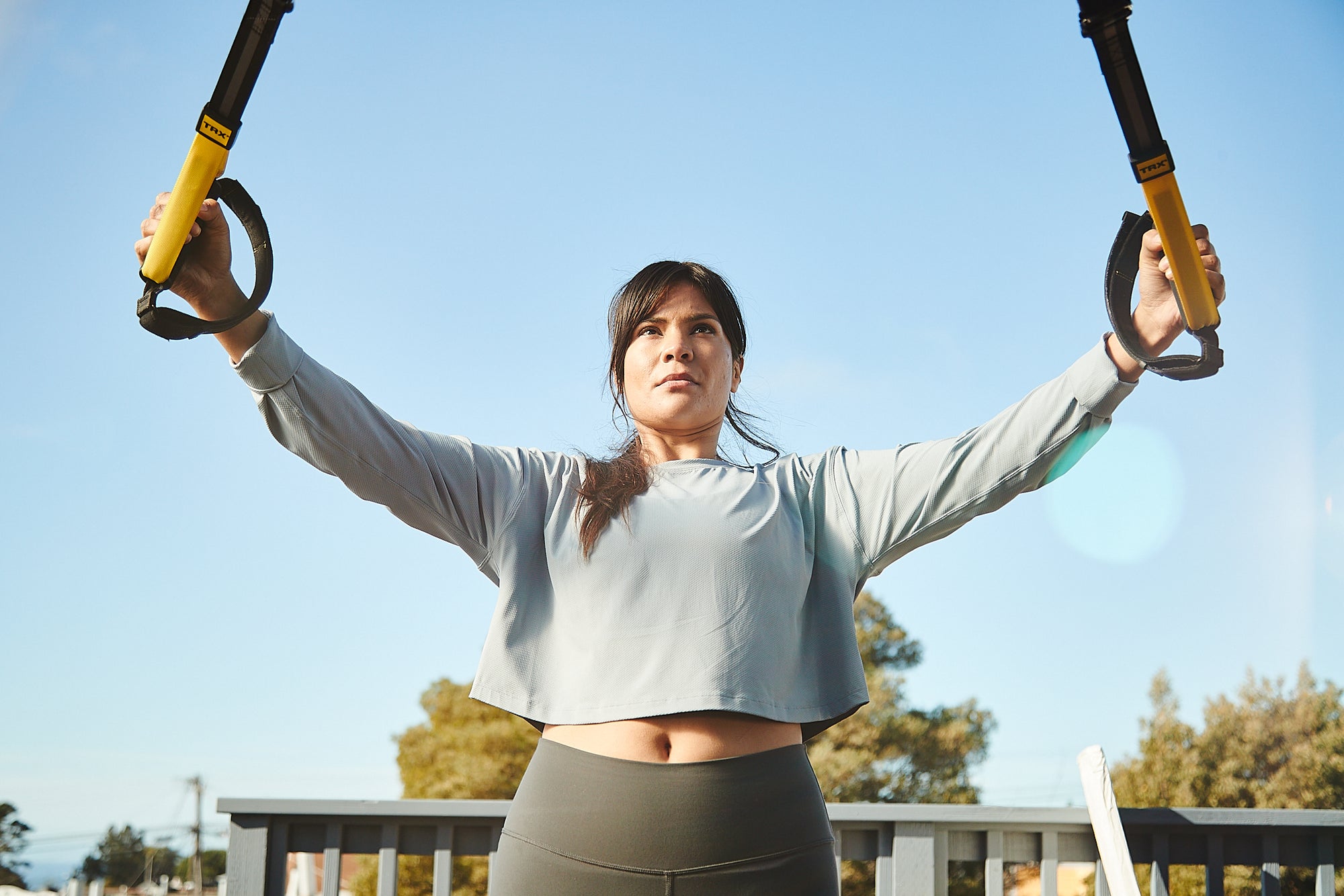
5 WOMEN WHO SHATTERED THE GLASS CEILING
It’s March and you know what that means—Women’s History Month! Join us this month in recognising five exceptional female athletes and sports figures whose intelligence, tenacity and strength of character kicked down glass ceilings and paved the way for active women everywhere.
BILLIE JEAN KING
To this day, Billie Jean King remains one of the most illustrious players in tennis history. Named by Life magazine as one of the “100 Most Important Americans of the 20th Century,” she is the winner of 39 Grand Slam singles, doubles and mixed doubles titles, including a record 20 titles at Wimbledon. Her success was instrumental in making it acceptable for American women to exert themselves in pursuits other than motherhood, but what is remembered most about her is that she humbled Bobby Riggs—a male tennis player she defeated in the famous “Battle of the Sexes.” She is also the first prominent female athlete to admit her homosexuality, and worked as an influential social activist after retiring from tennis, eventually becoming the first female athlete to win the Presidential Medal of Freedom and the NCAA’s President Gerald R. Ford Award.
CATHY RUSH
Often referred to as the “John Wooden of Women’s Basketball,” Cathy Rush’s tenure as a women’s basketball head coach may have been short, but it had a huge and lasting impact. Under her guidance, Immaculata College won three consecutive National AIAW Championships (1972, 1973 & 1974), five Eastern AIAW Championships, and two National AIAW Championship Runner-Ups—all during a time when many in the world still believed that a woman’s potential for success was limited. She not only established herself as a leader in women's sports, she is known for heralding in an era of securing scholarship money for female student-athletes. Today, she is still one of the few women inducted into the Pennsylvania Hall of Fame.
MARGARET DUNKLE
Margaret Dunkle is the lesser-known powerhouse behind implementing Title IX, the law that transformed education for women and girls to be safer—”No person in the United States shall, on the basis of sex, be excluded from participation in, be denied the benefits of, or be subjected to discrimination under any education program or activity receiving federal financial assistance.” Her groundbreaking 1974 report documenting discrimination against female athletes became the blueprint for the Title IX regulations on athletics. In 1975, she became the first Chair of the National Coalition for Women and Girls in Education, which led the successful fight for strong Title IX rules. Title IX was recently revised in the 2020 administration and not necessarily for the better, but it’s women like Dunkle that will continue fighting for women’s equality in sports.
LISA OLSON
In the 1970s, when increasing numbers of women sought to enter the field of sportswriting, women were routinely harassed or discriminated against and were not granted equal access to post-game locker room interviews. This didn’t change until a federal court decision in 1978—one that arose because Lisa Olson, a sports writer for the Boston Herald, was sexually harassed by players from the New England Patriots in the team’s locker room during an attempted interview. It was her civil suit and the publicity it received that paved the way for other female journalists, giving them a voice for what they had quietly endured for years. While her legal action led to threats and further harassment, she went on to become an acclaimed sports writer—today her work is featured in the anthology, “The Best American Sports Writing.”
ALTHEA GIBSON
Long before Venus and Serena Williams or even Billie Jean King picked up a tennis racket, Althea Gibson reigned supreme on the court, winning 11 Grand Slams and roughly 100 other titles worldwide. The same behind-the-scenes machinations that it took for Jackie Robinson to integrate baseball came into play when Gibson integrated tournament tennis by competing in the U.S. Nationals in 1950 and Wimbledon in 1951.
Gibson believed records were meant to be broken, but it took four decades for another black tennis player to catch up to her back-to-back national and international championships. She still holds the record for winning 10 consecutive singles titles in the American Tennis Association (ATA), which was founded in 1916 and is the oldest black sports organisation in history.
Looking back at these five, fighting trailblazers, it’s important to remember how far women have come in our national history, how much we’ve collectively come together and made great strides forward—and how far we still have to go.
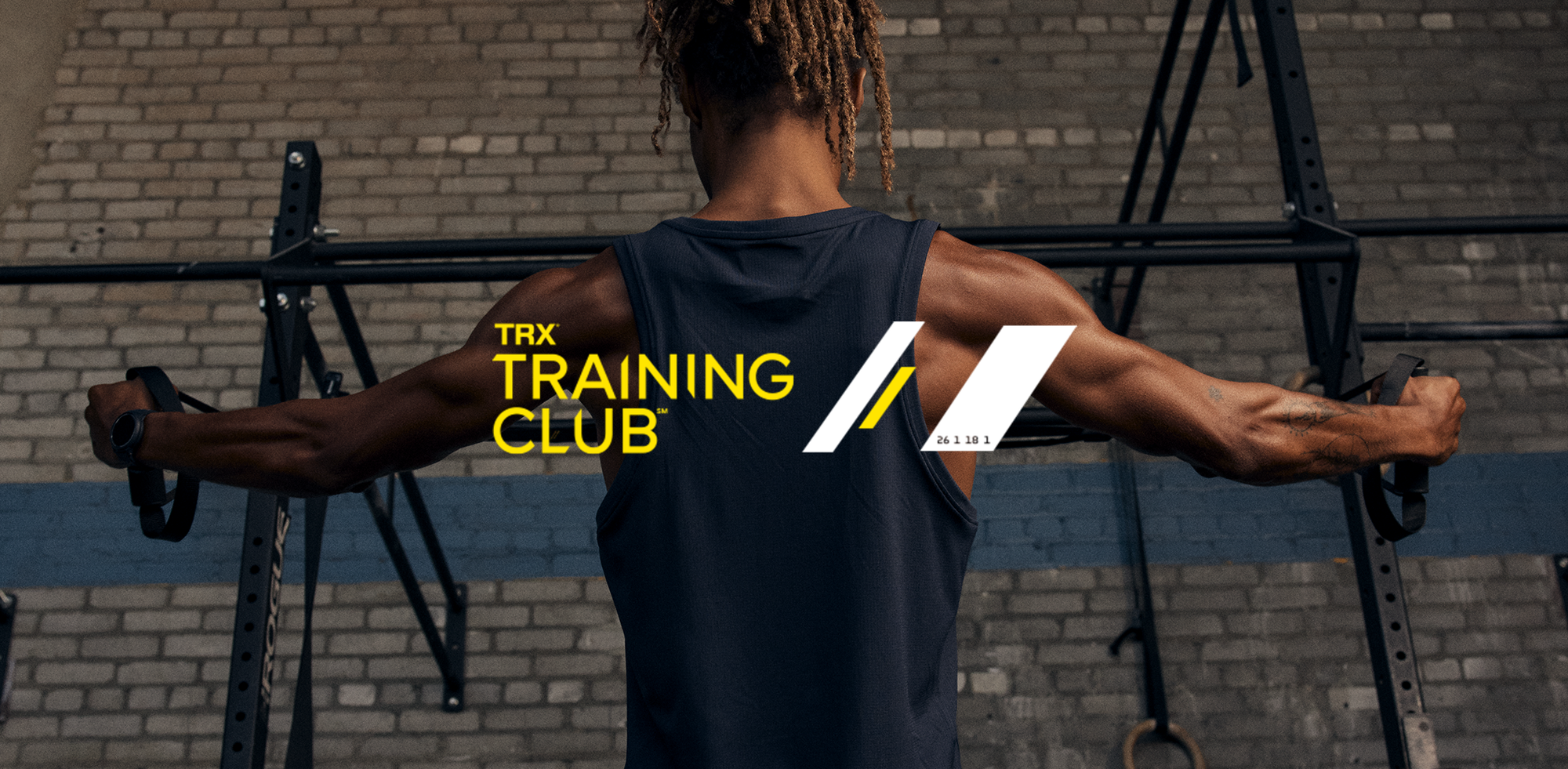
TRX Training Club® announces a partnership with ZARA
TRX Training Club® announces a partnership with ZARA
As part of the collaboration, the full-body TRX Suspension TrainerTM will be stocked online through the ZARA website. TRX products will be available online in 24 markets around the world, and stocked in 11 major city ZARA stores. The partnership runs alongside the latest ZARA’s Athleticz sportswear collection.ZARA customers will be able to subscribe to TRX’s proprietary digital fitness platform, the TRX Training Club®, with exclusive access to six months’ worth of unlimited on-demand workouts. The one-stop shop enables users to access a dynamic, multi-faceted training experience with unlimited on-demand workouts and live classes. The TRX Training Club’s latest REPLAY function also provides users with the opportunity to repeat and/or catch up on their favourite workouts.The partnership with ZARA marks a breakthrough moment for TRX. Brent Leffel, CEO of TRX, commented: “We are thrilled to partner up with one of the most well-renowned brands in the world and be part of ZARA’s new Athleticz range. Home workouts are clearly here to stay, and we have joined forces with ZARA to equip people with everything they need to exercise around their schedule.”
“I believe we can convert even more fitness enthusiasts, and together with ZARA, can provide customers with the ultimate comfort, alongside access to train by any means possible - either at home or on the go.”
The partnership has seen TRX Training Club’s Director of Trainer Branding, Niko Algieri, go to New York to shoot exclusive workout content in ZARA’s filming studio. Algieri commented: “When we created the TRX Training Club during a global pandemic, our goal was always to help people become more active all over the world. This partnership with ZARA enables us to level up what we are doing in this space and reach brand new audiences - the potential here is massive and we can’t wait to explore that.”
For more information on the TRX Training Club, visit https://club.trxtraining.com/en-gb/, and to shop the ZARA Athleticz range, head to https://www.zara.com/uk/en/zara-athleticz-collection-l4712.html.

HOW RANDY HETRICK RETIRED NAVY SEAL TURNED HIS SECOND ACT INTO A MULTI-MILLION DOLLAR BUSINESS
The Luxuria Lifestyle Interview: How This Retired Navy Seal Turned his Second Act into a Multi-Million Dollar Business Empire.
As a Navy SEAL Squadron Commander, Randy Hetrick was a member of the most elite fighting force on the planet. While on deployment overseas in 1997, he was looking for a way to keep his body in peak condition. Using only parachute webbing, a jiu-jitsu belt he accidentally packed in his bag and his body weight, Hetrick devised a workout system that is now the global leader in fitness known as TRX. Used in more than than 60,000 clubs and training facilities worldwide, this suspension-training workout system has become a multi-million dollar fitness phenomenon. Luxuria Lifestyle sits down with this innovator and visionary to find out more.
What did your experiences in the military teach you that helped you grow your business?
Most of the things I know about how to grow a business came from my experiences in the Navy SEAL Teams, learning how to organise a group of ordinary individuals around a common mission to accomplish truly extraordinary things.
And along those lines -how is ‘accountability’ one of the most important things you took from it?
Accountability is a thing found in surplus inside elite combat units. Everyone wants to man the wheel and is eager to own the outcome. Soldiers are steeped in accountability and ownership from the day they enter service and it only increases as they rise up the chain. I haven’t found that basic truth to apply as broadly in the civilian marketplace—especially when a plan hasn’t worked as well as might have been hoped.
But when you think about it, basic accountability—the desire to run one’s show and own one’s results—is the fundamental building block of accomplishment in ANY organisation of humans. With accountability, the organisation can promulgate approaches that work and it can diagnose and fix those that don’t. Without accountability, you’re just a block of driftwood bobbing along in the tide–with a few worried rats clinging to it, hoping to make landfall–and blaming each other for how they all got there, to begin with.
How has our modern fitness culture and the influence of filtered ‘fit-spiration’ stars on Instagram set us up for unrealistic ideas about what it means to be fit?
Look, the great thing about true fitness is that it is highly personal and NOBODY has a monopoly on it. While I appreciate that some super-fit cats work hard and want to show off the results of their efforts, I do have misgivings that their posts may alienate the majority of ordinary people (ie. People with real jobs and family responsibilities) who see them.
The reality is that the vast majority of freakishly fit, super ripped fitness influencers in Instagram are: 1) Single; 2) Marginally employed, and 3) Hungry. In my humble opinion, being fit means moving one’s body on a regular basis, eating as healthfully as one’s life accommodates, and feeling good about the investments in time that one dedicates to exercise. At the end of the day, the only thing we REALLY own is our body and our ability to move through the world doing what makes us happy for as long as possible. Shredded abs and body-builder muscle definition are ephemeral for all humans. Fluid, confident, pain-free movement and full functionality well into old age is the long-game that’s really worth playing.
What is it about TRX that makes it for ‘everybody’?
While we all come in different shapes and sizes, everyone has a body. The TRX Suspension Trainer harnesses the weight that we each carry around on our two feet and lets us use it as the resistance to power literally thousands of exercise movements and variations–simply by leaning back and lifting our bodies against gravity. At TRX we’ve gotten really good at putting together workouts for people at all different levels of fitness—from seniors to people recovering from surgery to regular folks trying to stay fit, to Olympic athletes gunning for the next world record—we all have the opportunity to choose the movement and level of challenge that is just right for us as individuals. And the TRX works literally anywhere: in the gym, at home, or out in the park. As we’ve been saying for years, our straps enable anyone to “make your body your machine.”
One of the aims of The ANYBODY, ANYWHERE campaign is that it is inclusive and works to ‘build a sense of community’ – how important is that – teamwork – when you’re trying to get people to commit to a workout routine?
The best possible environment for a workout routine is to exercise with other people who you enjoy. And the TRX does that, inside the gym or out in the world. But the real key to feeling the inspiring results from exercise is doing it regularly. 20-30 minutes per day, 4-5 times per week is a great place to start. So you have to pick a place and time that works with your life. The great thing about the TRX Suspension Trainer is that it goes wherever you want to go and it’s ready whenever you are. By removing the traditional barriers of geography, expense and fitness-level we’ve unlocked fitness for everyone, everywhere. And that’s a pretty cool thing.
What do you think intimidates people about the idea of ‘suspension training’? what do you wish they knew about it?
When you see world-class athletes training on a piece of kit, you can assume (in this case, wrongly) that the tool is only for those at the elite end of the spectrum. Ironically, many of our biggest advocates in the world of professional sport learned about the TRX from their physiotherapists when they were recovering from an injury! The reality is that our customer base is roughly 54% female and the ages stretch from 9 to 90. TRX has become one of the most popular forms of senior fitness in North America. I didn’t anticipate that when I created it but I’m sure happy that they found it! And if they can do it, so can everyone else with a body.
What are you most proud of in your professional life?
I came into the 50-year old health & fitness industry with a crazy strap and a surplus of belief that my team and I could positively influence the lives of tens of millions of people by democratising access to world-class fitness. 15 years later, we’ve accomplished that. And we’re really just beginning to hit our stride. That makes my parents proud, which makes me proud too.
What would be your top advice to anyone who is looking to build a business based on an idea as you have so successfully done?
1) Create a product that provides a solution to a real problem. I can’t tell you how often I see people trying to hawk some “solution” that’s desperately in search of a problem.2) Focus on innovation rather than imitation. Innovators always win in the end.3) Surround yourself with great mentors and work to build a strong network4) Never quit. When people ask me for my “secrets to success” I always answer that I’m as resourceful as a coyote and as tenacious as a cactus plant. Those may be my only real talents.

Surfer Jamel Ramiro Finds Stillness in the Waves
Jamel Ramiro is patient. It comes with the territory in surfing. It’s pretty helpful in life, too.
“Surfing for me is very therapeutic,” he said. “It allows me to be present and it makes me feel alive—wondering if this wave is going to crush me and kill me and keep me under, or if I'm just going to ride this amazing wave.”
If those sound like the words of a lifelong surfer, it might surprise you to learn that Jamel is relatively new to the sport. His first passion was actually Muay Thai.
Today, Jamel is a cold water surfer, a pitbull dad, and a personal trainer. But not that long ago, his life was pretty different.
Picture this: Jamel has trained in Muay Thai for years. He’s working a sales and marketing job in San Francisco, and teaching group fitness on the side. He’s searching for the next big wave of his career, which he knows is not behind a desk. A Muay Thai sparring buddy invites him to try out a new workout: TRX Suspension Training.
“I fell in love with it right away,” he said. From a strength and conditioning perspective, TRX was an ideal complement to Muay Thai. “I saw major improvements in a short amount of time.”
Wanting to perfect his form, Jamel kept going back. “One class became two classes in a row, became three classes in a row. And finally they were like, ‘Hey, do you want a job here as a trainer?’“
TRX may be an unlikely path to surfing, but it was the sliding door that led Jamel to the water. Taking a job as a TRX trainer motivated Jamel to pivot his career and leave his office job behind. When wellness became his livelihood, he had to cut back on Muay Thai training. “I ended up having to stop. I decreased my training because I was getting hurt too much,” he said.
That’s where surfing enters the picture.
Growing up in Chicago, Jamel always wanted to surf, but geography was not in his favor. In San Francisco, there was an opportunity. There was also an obstacle: the famously cold, choppy Pacific waves are not exactly welcoming for beginners.
“People would tell me that over here, it's really rough. Don't go out by yourself, especially Ocean Beach—it's known to be one of the hardest places to paddle out.” But, after a friend took him out to show him the ropes, he was hooked.
Surfing and TRX became a self-propelling cycle. While Jamel continued to hone his surfing skills, working as a TRX coach presented the opportunity to train world class surfers like Alex Martins and João De Macedo at the TRX Training Centre. De Macedo then invited Jamel to surf with him in Portugal. As Jamel began traveling the world—chasing waves, and training surfers— he would bring his TRX straps along for the journey.
“If I go to a surf camp, I'll usually leave behind my TRX and teach them how to use it. That way they can start training their people. When I believe in something I do my best to really push it,” he said.
Finding time to surf and cross train while working as a personal trainer isn’t easy. Bay Area surfers know the best waves come early in the morning; for Jamel, that’s often when clients want to complete their own workouts. But he makes the time to suit up later in the day and find his way to the ocean. When it comes to cross-training, he might try weight training underwater, or a session with his ever-present Suspension Trainer.
“I'm not the greatest surfer in the world,” he admitted, “but every day I'm striving to become better. I always have a goal every time I enter the water.”
For the uninitiated, the appeal of surfing is a mystery. Paddling out takes tremendous effort. You’re not guaranteed a wave. If one comes, it may only last ten seconds; thirty if you’re lucky. But for Jamel, the reward behind each wave is so much greater than just its duration.
“Surfing, in general, is not a progressive learning curve. It's more like the stock market, where you’re going to have good days and bad days. I pick up athletic things fairly easily, but with surfing—what I've come to learn and what's really humbled me—it's also the amount of time that you have on the board. Every wave is a different, new mountain that you’re just trying to conquer and understand.”

Kristin Leffel: Movement Makes Me a Better Mom, Wife, and Friend
Kristin Leffel knows how to stay skinny. She worked as an actress and model in Los Angeles for more than a decade. She ran religiously. “I wasn't really well-versed in lifting weights or anything like that. I was just an avid runner. I ran six or seven days a week. I probably wasn't very healthy because I was stick-thin, not eating after my runs. I was maintaining that model body.” It was until she had her kids—who she calls the lights of her life—that she figured out how to cut down on cardio, embrace strength training, and finally get serious about getting strong.
Like so many moms, Kristin suffered from diastastis recti after her pregnancies. For the uninitiated, that’s a separation in the abdominal muscles that leads to what magazines and social media have unkindly dubbed, “the mama pooch.” Running wasn’t helping her abs, so she turned to virtual sessions—shoutout to pandemic life!—with a personal trainer who TRX fans will recognise from TRX Live classes: Niko Algieri.
“It only took two months of working out three days a week with TRX to see a drastic difference in my diastasis. It was coming back together. My muscles were coming back together.” Beyond correcting her diastasis, TRX opened Kristin’s eyes to the positive impact of strength training.
“I didn't really fully understand it until now: how important strength training is and what it can do for your body. I am more toned than I've ever been. I'm stronger than I've ever been. I haven't cut out running completely. I run two days a week and do TRX four to five days a week.”
Anyone who’s parented through the pandemic—or, really, parented at all—knows that finding an hour each day to exercise can be a challenge. Kristin can relate. “I started out one month into lockdown, and my husband was working from five in the morning until seven o'clock at night.” But the benefits of finding that time, she said, are worth the sacrifice.
“When I started out, it was my ‘me’ time, It was my one hour of ‘me’... I'm a better mom because I work out. I'm a better wife. I'm a better friend. I have more energy. I have more stamina. I sleep better. I'm stronger. I have more confidence.”
Nine months after she started working out with the TRX Suspension Trainer, Kristin completed her training for TRX qualification and has even started teaching a weekly class online for friends. She’s got a full set-up at home—Suspension Trainer, bands, kettlebells, and the Rocker—ready for her daily escape for self-care or to motivate other TRX athletes.
More important to Kristin, the time she spends training now means she’ll be able to stay more active and engaged with her kids in the long run.
“Movement is important to me—especially in this period of my life—because I want to stay fit and have the energy to keep up with my kids. It helps me in all aspects of my life. I'm getting better asleep. I have more energy during the day. I'm just a happier person.
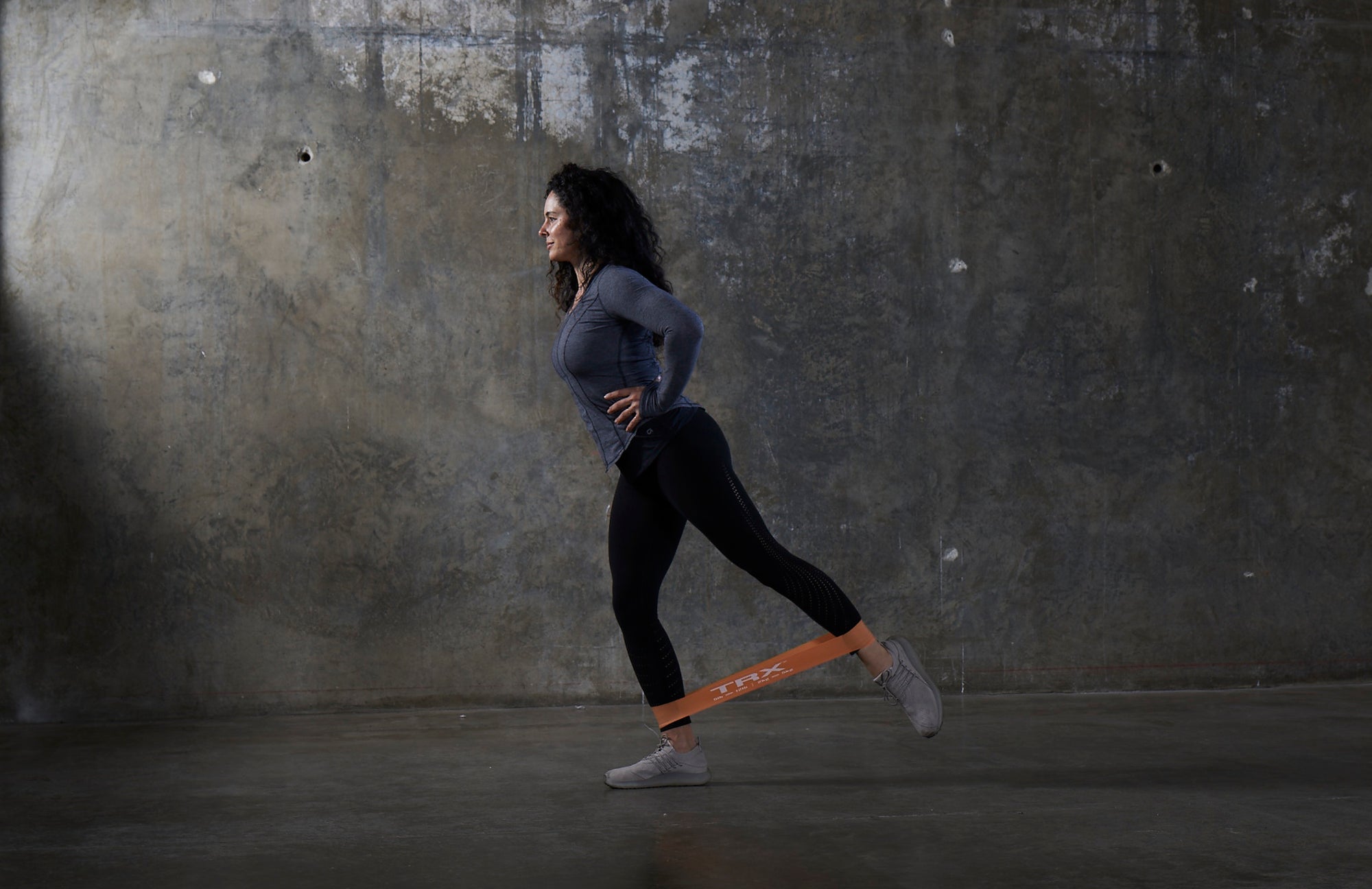
5 TRX® Workouts Every Runner Needs To Improve Strength & Endurance
We’re all born to run, right? We definitely are, except many of us spend our lives in office jobs, sitting in cars during heavy traffic, and other factors that all play a role in how our body responds to both running volume and intensity. Training with your TRX® Suspension Trainer™ and other TRX weights plus resistance tools are a great way to add in running-specific strength, because while our bodies are highly resilient, over time, injuries can happen (like the dreaded IT band and achilles). The good news? Adding in strength training will make you a better, stronger runner by focusing on all the muscles that carry over into your running form and technique.
1) WARMUP ACTIVATION DRILL: BREAK OUT THE TRX® GLUTE BAND
Every run starts with a solid warmup, and a solid warmup can go beyond the usual run-in-place and stretch—it’s intelligently firing up the muscles you’ll use during running. Firstly and foremost, activating your hips and glutes (read: glute medius, glute minimus, glute maximus, adductors, and more) to help stabilise your pelvis for power.
Build up glute and hip strength to improve posture, pelvic stability, and low back pain.
Soft fabric won’t bunch on leggings or tug hair when next to skin.
3 levels of resistance (light, medium, heavy) to best challenge you as you get stronger.
Adjustable sliders offer even more customisation.
Mesh bag to carry with you wherever you go.
Perform the following moves back-to-back one time through to activate your entire lower body.
MOVE 1: MONSTER WALK, 20 STEPS EACH WAY
Wrap the TRX® Exercise Band of your choice around your knees, hinge back into a quarter squat, and slowly step out to the left 20 times. Then step forward 20 times, to the right 20 times, then backwards 20 times to complete a square. The key? Keep your hips level and try not to shift your weight too much so your glutes and hips do all the work.
MOVE 2: SQUATS, 10 REPS EACH
With the Exercise Band still looped around your knees, perform 10 bodyweight squats, then hold halfway down and perform 10 pulses (one inch up and down, no bouncing), and finish up with holding it at the halfway point again, this time pulsing your knees outward 10 times. The burn is SO real.
MOVE 3: GLUTE KICKBACKS, 10 REPS EACH
Get in a tabletop position, hands and knees on floor, Exercise Band looped around your knees. Keeping the core tight and without letting the low back arch, lift one leg toward the ceiling—make sure you keep the knee bent the whole time. It’s a burner of a move and really teaches you proper glute and core activation at the same time.
Want to stop the workout here? Our TRX® Strength Bands are great for shoulder workouts, upper body moves, and all-around full body workouts.
2) STRENGTH SUPERSET: BREAK OUT THE MINI TRX® EXERCISE BANDS
Next up, we want to fire up the front of your hips, which includes your core. Why is this important? Lumbopelvic control and core muscles provide stability for better force generation and motion in the legs (read, less tight hamstrings and longer strides), as well as more controlled and efficient body movements. That’s definitely technical so here’s the gist: imbalances or weakness in the pelvic area and core can result in increased fatigue, decreased endurance, and injury in runners. Let’s add some resistance with our TRX® Exercise Bands, shall we?
Perform each move back-to-back, then rest for 30-60 seconds after the last move. Perform 3 rounds of the moves, then move on to the next Strength Superset, shown below.
MOVE 1: DEAD BUGS, 20 REPS TOTAL
Loop the Exercise Band of your choices (we recommend Lite or Medium) around the balls of your feet. Lie flat on your back and point your arms straight up at the sky. Lift your knees off the ground in a tabletop position (90 degrees). Tighten up your core and without moving anything else, straighten one leg out all the way, then slowly return it back to starting. Repeat on the other leg. Continue back and forth until you complete 20 reps. Feel free to add in this opposing movement to make it more challenging: straighten the opposite arm overhead and flat on the ground with each leg rep.
MOVE 2: HIP FLEXOR MARCHES, 20 REPS TOTAL
When your hip flexors are strong, you can bring your leg up higher for a better stride—plus it’ll take some of the stress away from your adductors so they don’t do too much of the work. With the Exercise Band still looped around the balls of your feet, stand up tall—as tall as you can, feet rooted into the ground—and lift one knee up as high as you can. Pause there for a second, then slowly lower it back down. Your opposite glute should be super fired up. Perform 10 reps on one side, then repeat on the other side. Extra challenge: Hold the last rep at the highest point for 10 seconds before returning to start.
MOVE 3: ADDUCTOR RAISES, 15 REPS TOTAL
Remember what we said about adductors doing too much of the heavy lifting? They should also be strong to keep your hips balanced (especially with all of the glute work). Take a page out of champion middle-distance runner & steeplechaser Emma Coburn’s book and perform this burner of a move: Lie on your side and keep the Exercise Band looped around the balls of your feet. Lift and bend your top knee toward your chest, thendrop your knee to rest on the floor, bottom leg stays straight. Lift your bottom leg up and down, resisting against the tension. Perform 15 reps on each side to feel the burn.
3) STRENGTH SUPERSET: SINGLE LEG MOVES WITH YOUR TRX® SUSPENSION TRAINER™
In the fitness trainer world, this is called “unilateral” strength and it’s important because, guess what? When you’re running, you’re suspended on a single leg the entire time. Perform these moves back-to-back on your straps (shop the HOME2 and PRO4 here), then rest for 60 seconds after the last move. Perform 3 rounds of the moves, then move on to the next Strength Superset, shown below.
WHAT IT DOES
Excellent coordination and control challenge
Improves power and strength that carries over into running form
Using the straps also works your upper back and arms
MOVE 1: TRX LUNGE, 10 REPS
Balance and control is the name of the game (plus full leg strength and pelvic control) with this suspended lunge.
MOVE 2: TRX SINGLE LEG GLUTE BRIDGE, 10 REPS
Feel free to go double leg with our standard TRX® Glute Bridge, but to really up the ante, try for a single leg bridge to really isolate your hamstrings, which are super important for every runner.
MOVE 3: TRX SKATER LUNGE, 10 REPS
Want to feel super strong on one leg? Build up your quad (and knee strength) with this powerful move.
4) STRENGTH SUPERSET: WORK THE CORE
Planks are challenging on their own, but add the suspended effort of your TRX® Suspension Trainer™? Boom—now we’re talking serious strength and control. When it comes to core workouts, there’s no need to overdo it. All you need are a couple back to really dial in on every last ab, oblique, and back muscle.
MOVE 1: TRX ROLLING PLANK, 10 REPS TOTAL
This fiery combo is just that, FIERY. Start in an elbow plank with your feet in the cradles. Hold each of the following for a few seconds before moving on to the next for one full rep: Elbow plank > left side elbow plank > right side elbow plank > back to elbow plank. You’re welcome.
MOVE 2: TRX PUSH UPS, 10 REPS
Stay in the straps and move from your elbow to your hands. Perform 10 pushups and then rest, then repeat the superset two more times.
5) HIIT FINISHER: BUST OUT THE TRX® KETTLEBELL + TRX® MEDICINE BALL
Now for the finisher. Turn a timer on for 8 rounds with 20 seconds on, 10 seconds off. Complete 8 rounds of the first move, then perform 8 rounds of the second move. Boom—your heart rate is up and your lower body fully torched. Make sure you have a TRX® Kettlebell and a TRX® Medicine Ball with some bounce before you begin.
MOVE 1: KETTLEBELL DEAD CLEAN
Place the Kettlebell between your feet then hinge back (like you’re about to deadlift), bending your knees to lower down when you can’t hinge back any further. Grasp the kettlebell by the horns, sit back a little deeper, chest up, lats squeezed like you’re holding a dollar bill there. Push through your feet and explode up, catching the kettlebell at chest height. Not sure how to perform this move? See a breakdown here. Not sure how to hinge? Try practicing with a broomstick first.
MOVE 2: SPLIT SQUAT HOLD + MEDICINE BALL SLAM
Hold a lunge position with both legs bent, back knee hovering off the ground. Slam the medicine ball down hard on your left side, catch it, then slam it down hard on your right side, catching it again. Repeat back and forth.
Congrats! Way to crush the whole workout. Feel free to do it twice a week to add in some serious strength to your running.
OH, AND JUST IN CASE...
If you don’t already have a set of straps, check out our HOME2 (best for those new to fitness) or the PRO4 (best if you need something more advanced), and shop them now. And, of course, behind every Suspension Trainer workout is the anchor that hangs it up—find the one for your training space here.
